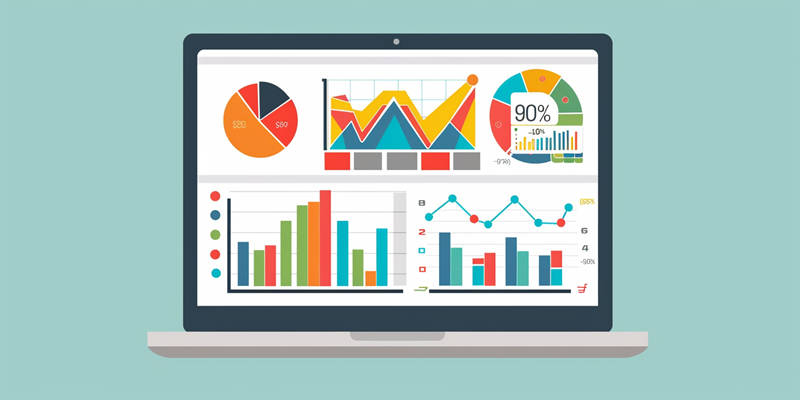The rapidly evolving business landscape necessitates a transformation in human resources (HR) practices. Organizations vying for a competitive edge and more informed decision-making are turning their gaze towards People Analytics. This approach, synonymous with workforce analytics or HR analytics, harnesses the power of data collection and analysis to revolutionize HR strategies, inform crucial decisions, and bolster the entire employee life cycle. Despite its clear advantages, integrating People Analytics into HR functions is not without its challenges. Resistance often manifests, heralding the need for a clear and pragmatic approach to overcoming such obstacles. Employing these powerful analytics transforms the HR department into a forward-thinking, essential division that embodies the innovation at the heart of modern business.
Understanding the Resistance to People Analytics
Implementing People Analytics often runs into resistance, which can manifest as a variety of issues within a company. Poor data quality—often termed “garbage in, garbage out”—results in analytics that can hardly be trusted. Then there’s the skills gap; current HR staff may lack the necessary expertise in analytics, which creates a significant barrier to leveraging data’s full potential. This is by no means an exhaustive list, as there’s also deep-seated resistance to change and a pursuit for an unrealistic level of perfection before initiatives even begin. Overcoming these hurdles is crucial for the seamless adaptation of data-driven decision-making that can truly transform HR efforts.
Data quality is paramount for reliable People Analytics. Thus, organizations should prioritize enhancing the integrity of their data. This can involve consolidating disparate data into a centralized system, enriching data consistency, and demanding reliability from its sources. Once the foundation of data quality is laid, the analytics that emerge from it are more likely to lead to actionable and credible outcomes.
Overcoming Poor Data Quality and Bridging the Skills Gap
The crux of effective People Analytics depends significantly on data quality and the proficiency of the team handling it. The emphasis on upskilling within HR departments is undeniable. Rather than striving to make every member a data analyst, it’s about nurturing specific individuals who show an affinity for data. This means investing in training that enhances the analytical acumen of HR professionals. Moreover, involving them in choosing the right analytics tools can keep them engaged and ensure that the technologies adopted are user-friendly and align with the team’s skills.
The growing pains associated with transitioning to People Analytics cannot be understated. Often, inherited systems suffer from issues such as fragmented data and inconsistent metrics, which can lead to unreliable analytics. It is essential for companies to assess and subsequently improve the quality of their data. This not only includes consolidating scattered information but also standardizing it to create a reliable and unified data set from which to draw insights.
Strategies for Implementing People Analytics
Introducing a new system always comes with its fair share of challenges, particularly when it represents a significant shift in operations. People Analytics is no different, and a multifaceted strategy is necessary to manage the transition. This includes establishing clear goals and objectives, ensuring quality data integration, and fostering a level of data literacy among HR staff. Moreover, the strategy should be about starting small with analytics projects and then gradually scaling these up; targeting areas of particular need and using those successful pilots to gain executive support and wider buy-in across the organization.
Managing the inevitable resistance to change involves proactive strategies that illuminate the tangible benefits of People Analytics. HR leaders should demonstrate how adopting analytics tools will streamline daily workflows and improve overall efficiency. Transparency and effective change management can lead to greater acceptance and enthusiasm for the new systems among HR staff. By highlighting the advantages, HR can expect less resistance and more support for this transformative tool.
Building a Data-Driven HR Culture
To truly reap the rewards of People Analytics, fostering a culture of data literacy is vital. HR professionals must be capable of interpreting data effectively to draw meaningful conclusions. This cultivates an environment where every team member can appreciate the value of the insights provided by analytics. Providing training and the necessary tools is essential in nurturing this data-centric mindset.
Moreover, organizations must nurture a culture of continuous learning and openness to improvement. A landscape that encourages exploration and views mistakes as learning opportunities will inherently support the adoption and evolution of People Analytics. As HR professionals become more adept with data, the analytics will, in turn, become more sophisticated and integral to strategic decision-making.
Utilizing Tools for a Smooth Transition into HR Analytics
User-friendly analytics platforms can greatly reduce the complexity of adopting People Analytics and encourage its use among HR personnel. Tools such as those offered by HireRoad simplify the experience, promoting a smoother transition and a higher level of employee buy-in. Demonstrating clear, achievable results from pilot programs is a persuasive tactic to secure both executive buy-in and further investment in the wider integration of People Analytics.
Platforms like HireRoad act as a catalyst, simplifying the introduction of People Analytics and supporting HR departments in their bid to become data-driven entities. These tools not only provide the technological means but also help shape the necessary mindset among staff and leadership, paving the way for a progressive analytics-driven HR culture.
Embracing the Future of HR with People Analytics
Adopting People Analytics extends far beyond merely tweaking HR functions; it holds the potential to revise employee experiences and significantly bolster organizational health. Recognizing these broader implications allows HR leaders to place People Analytics at the core of strategic business management.
As HR departments brace for the transformation People Analytics brings, they must consider strategic planning, ensuring impeccable data quality, providing comprehensive staff training, and adopting an iterative approach to implementation. By adopting these practices, HR can ensure the successful integration of analytics and position itself as an insightful, strategic asset to the organization. People Analytics heralds a future where HR is not just a support function, but a vital driver of innovation and business success.

